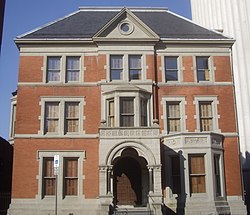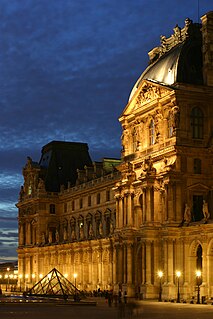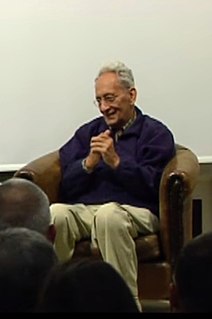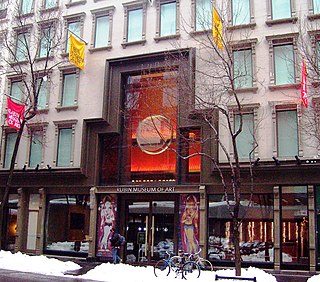 | |
| Established | 1909 |
|---|---|
| Location | 49 Washington St Newark, NJ, USA |
| Director | Linda C. Harrison [1] |
| Public transit access | Washington Park Station (Newark Light Rail) |
| Website | newarkmuseum.org |
James Street Commons Historic District | |
 John Ballantine House | |
| Coordinates | 40°44′34″N74°10′18″W / 40.742651°N 74.171779°W Coordinates: 40°44′34″N74°10′18″W / 40.742651°N 74.171779°W |
| NRHP reference # | 78001758 [2] |
| NJRHP # | 1275 [3] |
| Significant dates | |
| Added to NRHP | January 9, 1978 |
| Designated NJRHP | February 10, 1977 |
The Newark Museum, in Newark, Essex County, New Jersey, United States, is the state's largest museum. It holds major collections of American art, decorative arts, contemporary art, and arts of Asia, Africa, the Americas, and the ancient world. Its extensive collections of American art include works by Hiram Powers, Thomas Cole, John Singer Sargent, Albert Bierstadt, Frederick Church, Childe Hassam, Mary Cassatt, Edward Hopper, Georgia O'Keeffe, Joseph Stella, Tony Smith and Frank Stella.

Newark is the most populous city in the U.S. state of New Jersey and the seat of Essex County. As one of the nation's major air, shipping, and rail hubs, the city had a population of 282,090 in 2018, making it the nation's 73rd-most populous municipality, after being ranked 63rd in the nation in 2000.

Essex County is a county in the northeastern part of the U.S. state of New Jersey. As of the 2018 Census estimate, the county's population was 799,767, making it the state's third-most populous county, an increase of 3.1% from the 2010 United States Census, when its population was enumerated at 783,969, in turn a decrease of 1.2% from the 793,633 enumerated in the 2000 census. In 2010, the county dropped down to third-largest, behind Middlesex County, and was one of only two counties in the state to see a decline between 2000 and 2010. Its county seat is Newark, the most populous city in the state. It is part of the New York Metropolitan Area.

New Jersey is a state in the Mid-Atlantic region of the United States. It is a peninsula, bordered on the north and east by the state of New York; on the east, southeast, and south by the Atlantic Ocean; on the west by the Delaware River and Pennsylvania; and on the southwest by the Delaware Bay and Delaware. New Jersey is the fourth-smallest state by area but the 11th-most populous, with 9 million residents as of 2017, making it the most densely populated of the 50 U.S. states with its biggest city being Newark. New Jersey lies completely within the combined statistical areas of New York City and Philadelphia. New Jersey was the second-wealthiest U.S. state by median household income as of 2017.
Contents
The Newark Museum's Tibetan galleries are considered among the best in the world. The collection was purchased from Christian missionaries in the early twentieth century. The Tibetan galleries have an in-situ Buddhist altar that the Dalai Lama has consecrated. In addition to its extensive art collections, the Newark Museum is dedicated to natural science. It includes the Dreyfuss Planetarium and the Victoria Hall of Science which highlights selections from the museum's 70,000 specimen Natural Science Collection. The Alice Ransom Dreyfuss Memorial Garden, located behind the museum, houses numerous works of contemporary sculpture and is the setting for community programs, concerts and performances. The garden is also home to a 1784 old stone schoolhouse and the Newark Fire Museum.

Tibet is a region covering much of the Tibetan Plateau in Tibet Autonomous Region, China. It is the traditional homeland of the Tibetan people as well as some other ethnic groups such as Monpa, Tamang, Qiang, Sherpa, and Lhoba peoples and is now also inhabited by considerable numbers of Han Chinese and Hui people. Tibet is the highest region on Earth, with an average elevation of 5,000 m (16,000 ft). The highest elevation in Tibet is Mount Everest, Earth's highest mountain, rising 8,848 m (29,029 ft) above sea level.

Dalai Lama is a title given by the Tibetan people for the foremost spiritual leader of the Gelug or "Yellow Hat" school of Tibetan Buddhism, the newest of the classical schools of Tibetan Buddhism. The 14th and current Dalai Lama is Tenzin Gyatso, who lives as a refugee in India.

Science is a systematic enterprise that builds and organizes knowledge in the form of testable explanations and predictions about the universe.
The museum was founded in 1909 by librarian and reformer John Cotton Dana. As the charter described it, the purpose was "to establish in the City of Newark, New Jersey, a museum for the reception and exhibition of articles of art, science, history and technology, and for the encouragement of the study of the arts and sciences." The kernel of the museum was a collection of Japanese prints, silks, and porcelains assembled by a Newark pharmacist. [4]

John Cotton Dana was an American library and museum director who sought to make these cultural institutions relevant to the daily lives of citizens. As a public librarian for forty years Dana promoted the benefits of reading, pioneered direct access to shelved materials, and innovated specialized library services of all types.

Japanese art covers a wide range of art styles and media, including ancient pottery, sculpture, ink painting and calligraphy on silk and paper, ukiyo-e paintings and woodblock prints, ceramics, origami, and more recently manga which is modern Japanese cartoons and comics along with a myriad of other types. It has a long history, ranging from the beginnings of human habitation in Japan, sometime in the 10th millennium BC, to the present-day country.
Originally located on the fourth floor of the Newark Public Library, the museum moved into its own purpose-built structure in the 1920s on Washington Park after a gift by Louis Bamberger. It was designed by Jarvis Hunt, who also designed Bamberger's flagship Newark store. [5] [6] Since then, the museum has expanded several times, to the south into the red brick former YMCA and to the north into the 1885 Ballantine House, by means of a four-year, $23 million renovation [7] . In 1990, the museum expanded to the west into an existing acquired building. At that time much of the museum, including the new addition, was redesigned by Michael Graves.

The Newark Public Library (NPL) is a public library system in Newark, New Jersey. The library offers numerous programs and events to its diverse population. With eight different locations, the Newark Public Library serves as a Statewide Reference Center. The Newark Public Library is the public library system for the city of Newark, Essex County, New Jersey, United States. Currently, the library boasts an enormous collection of both art and literature, art and history exhibits, a variety of programs for all ages, and much more.

Washington Park is a city square in Downtown Newark, New Jersey. It is the northernmost of the three downtown parks, along with Lincoln Park and Military Park, that were laid out in the colonial era. The triangular park is bounded by Broad Street, Washington Street, and Washington Place at the end of Halsey Street. It is home to several public statues and is surrounded by historic civic and commercial buildings.

Louis Bamberger was the leading citizen of Newark, New Jersey, from the early 1900s until his death in 1944. He is noted for co-founding the Institute for Advanced Study in Princeton, New Jersey. He was a businessman and philanthropist and at his death all flags in Newark were flown at half-staff for three days, and his large department store closed for a day.
The museum had a mini-zoo with small animals for some twenty years, until August 2010. [8]
For the security of climate-sensitive artwork, the museum closed its front entrance to the public in 1997 to minimize the effects of temperature and humidity changes. However, in February 2018, after extensive renovation and the construction of a ramp for disabled access, the front doors were reopened. [9]
The museum is open from 12 to 5 pm from Wednesdays to Sundays and is free for Newark residents [10] .
The Newark Black Film Festival is held every summer at the museum.















